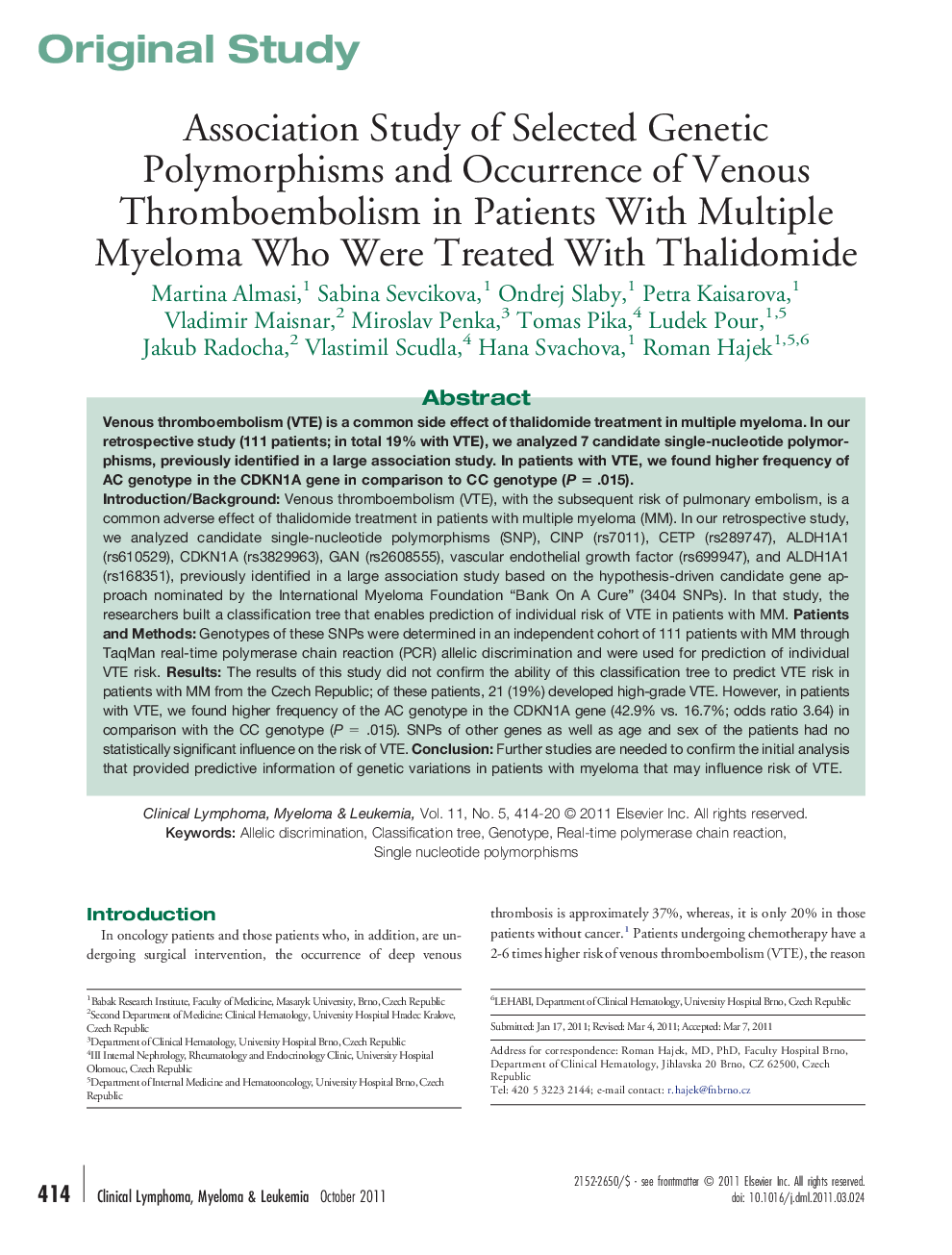| Article ID | Journal | Published Year | Pages | File Type |
|---|---|---|---|---|
| 2755406 | Clinical Lymphoma Myeloma and Leukemia | 2011 | 7 Pages |
Introduction/BackgroundVenous thromboembolism (VTE), with the subsequent risk of pulmonary embolism, is a common adverse effect of thalidomide treatment in patients with multiple myeloma (MM). In our retrospective study, we analyzed candidate single-nucleotide polymorphisms (SNP), CINP (rs7011), CETP (rs289747), ALDH1A1 (rs610529), CDKN1A (rs3829963), GAN (rs2608555), vascular endothelial growth factor (rs699947), and ALDH1A1 (rs168351), previously identified in a large association study based on the hypothesis-driven candidate gene approach nominated by the International Myeloma Foundation “Bank On A Cure” (3404 SNPs). In that study, the researchers built a classification tree that enables prediction of individual risk of VTE in patients with MM.Patients and MethodsGenotypes of these SNPs were determined in an independent cohort of 111 patients with MM through TaqMan real-time polymerase chain reaction (PCR) allelic discrimination and were used for prediction of individual VTE risk.ResultsThe results of this study did not confirm the ability of this classification tree to predict VTE risk in patients with MM from the Czech Republic; of these patients, 21 (19%) developed high-grade VTE. However, in patients with VTE, we found higher frequency of the AC genotype in the CDKN1A gene (42.9% vs. 16.7%; odds ratio 3.64) in comparison with the CC genotype (P = .015). SNPs of other genes as well as age and sex of the patients had no statistically significant influence on the risk of VTE.ConclusionFurther studies are needed to confirm the initial analysis that provided predictive information of genetic variations in patients with myeloma that may influence risk of VTE.
